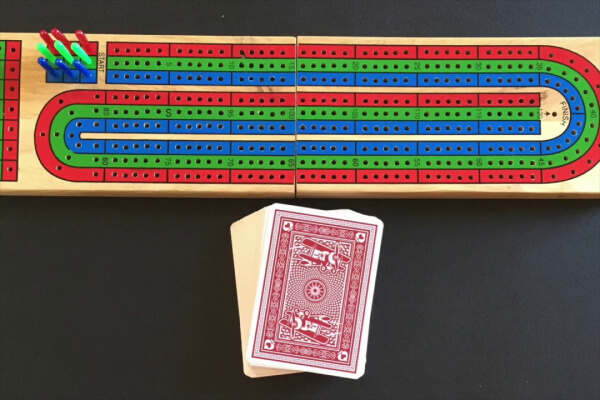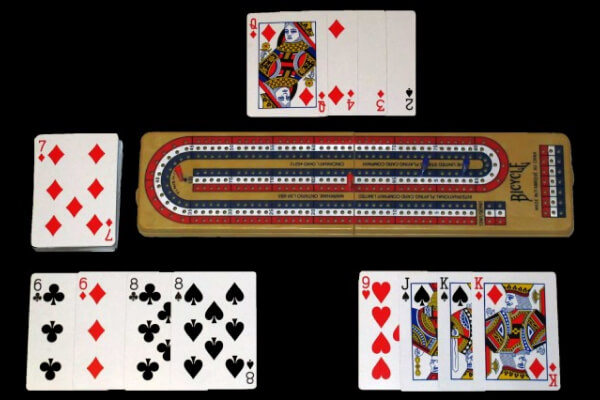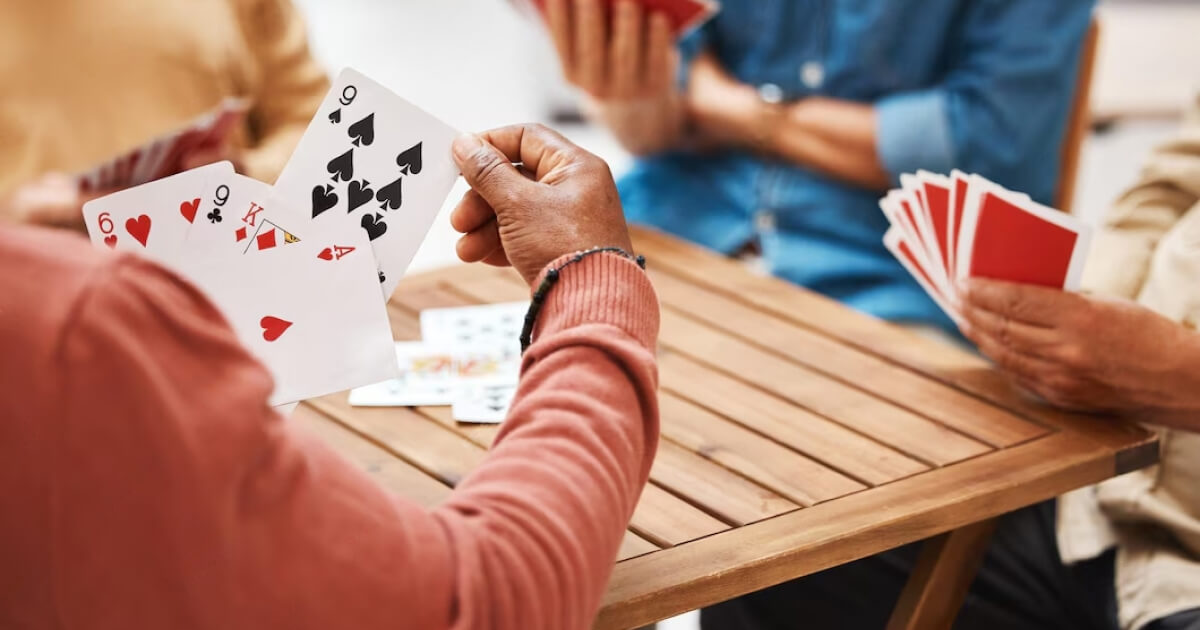Originating in the early 1600s, cribbage is a traditional card game with great legacy. English poet and gambler Sir John Suckling is credited with creating the game from a version on the now-obsolete game Noddy.
Cribbage game has developed over ages into a generally liked game distinguished by its strategic complexity and unusual scoring system. This article will teach how to play cribbage, including goals, setup, and basic techniques.
Here is a Guide on Card Game Cribbage How to Play
The Object of the Cribbage Game
The main objective of cribbage is to be the first player to achieve 121 points (or 61 points in shorter games). Different card combinations in players’ hands and the dealer’s “crib,” a separate hand of cards, build points. The first player wins the game to reach the target score.
The Cribbage Board
The cribbage board, unchanged for over 400 years, is a wooden board with 121 holes per track, designed for two, three, or four players. Each player has two pegs of their color (commonly red, green, or gold) to keep track of their scores.
Game Setup

➡ Two-player Cribbage
Each participant in a two-player game picks a color and lays two pegs at the beginning of their own tracks on the board. Each player receives six cards from the dealer after he shuffles the deck. Each player then chooses two cards from their hands to discard into the crib, therefore leaving a four-card hand.
➡ Three-Player Cribbage
The dealer gives one card to the crib and five cards to each of three-player cribbage players. Every player chooses one card from their hand to discard into the crib, therefore producing a four-card crib for the dealer. The participants choose their colors and set their pegs at the beginning of each of their individual courses.
➡ Four- Player Cribbage
Players in a four-player game form two teams with partners seated opposite each other. Every player gets five cards; each discards one card into the crib. The game starts with the participants trading pegs and tracks with their mates.
➡ The Crib
The crib is a secondary hand for the dealer, consisting of four cards discarded by the players. These cards are not revealed or used during the hand and are scored by the dealer at the end of the round for additional points. The crib is crucial for the dealer, as it provides opportunities to gain extra points.
Scoring in Cribbage
➡ Card Values
- Face cards (King, Queen, Jack): 10 points each
- Number cards: Face value (e.g., an eight is worth eight points)
- Ace: 1 point
- Jokers are not used in cribbage.
➡ The Starter Card
After the cards are dealt and the crib is set, the non-dealer cuts the deck, and the dealer reveals the top card of the remaining deck, known as the “starter” or “upcard.” If this card is a Jack (called “His Nobs”), the dealer immediately scores two points. The starter card is then used to create additional scoring combinations with the players’ hands and the crib.
Also See: Best Free Solitaire Games to Play Online
Cribbage How to Play Rules
Players take turns laying down cards, starting with the non-dealer. Each card played adds to a running total, which cannot exceed 31. Players must announce the running total after playing a card. If a player cannot play a card without exceeding 31, they call “Go,” and their opponent scores one point and continues playing until they reach 31 or cannot play further. If a player hits exactly 31, they score two points.

➡ Scoring Combinations
- Pairs: Playing a card of the same rank as the previous card scores two points.
- Fifteen: Playing a card that makes the running total 15 scores two points.
- Triplets: Three consecutive cards of the same rank score six points.
- Double Pairs (Four): Four consecutive cards of the same rank score 12 points.
- Sequences (Runs): Playing a card that forms a sequence scores points equal to the number of cards in the sequence (e.g., a run of three scores three points).
➡ Pegging and Keeping Score
Players move their pegs forward based on the points they score during gameplay. Scoring opportunities include pairs, fifteens, triplets, double pairs, and runs. The last card played in a series scores one additional point, unless it makes the total exactly 31, which scores two points.
➡ Scoring a Cribbage Hand
After all cards have been played, each player scores their hand, starting with the non-dealer. The dealer scores last, scoring both their hand and the crib. Points are awarded for combinations that add up to 15, pairs, runs, and flushes (four or five cards of the same suit). A Jack of the same suit as the starter card (His Nobs) scores one point.
➡ Example of Scoring Combinations
Consider a hand with the starter card 9, and the player’s hand containing 6, 6, 2, 8. This hand scores four points for two combinations that add up to 15 (9+6, 9+6) and two additional points for the pair (6, 6).
➡ Winning the Game
A player achieves 121 (or 61) points and the game finishes. The losing player gets “lurched,” meaning the winner wins two games instead of one, if a player obtains the desired score before their opponent hits the halfway mark on the board (61 or 31 points).
Advanced Strategies
Once you grasp the fundamental cribbage principles, you may begin using more complex techniques to raise your odds of winning.
➡ Discarding to the Crib
Try to throw cards to the crib that would produce combinations as the dealer. Because they may make fifteens readily, high-value cards such 5s, face cards, and 10s are prized in the crib. Try to throw cards less likely to help the dealer, including lower value cards or cards that do not readily form combinations, when you are not the dealer.
➡ Counting Cards
Look at the cards that have been used as well as those still in the deck. This knowledge will enable you to decide which cards to hold onto and which to play from better perspective. It lets you also predict your opponent’s actions and prevent their chances for scoring.
➡ Optimal Play
Try to maximize your points and minimize your opponent’s possibilities while playing your cards. For instance, steer clear of playing a card that would result in a running total of 21 should your opponent have a 10 or face card, bringing the total to 31 and earning two points.
➡ Strategic Pegging
Try to set up pegging events wherein you may score pairs, runs, or fifteen. Furthermore take into account when you call “Go” to maximize your scores and reduce the scoring possibilities for your opponent.
➡ Practicing Cribbage Online
Mastery at cribbage requires practice. You may play cribbage online in several ways including Cribbage Solitaire and Cribbage Blitz. Online sites provide an enjoyable and practical approach to develop your abilities, train your brain, and enjoy the game.
Finally
Simple but strategic complexity is combined in the classic card game cribbage. For players of various ability levels, its unusual scoring system and hand-cub interaction make for an interesting game. Understanding the fundamental principles and using smart play can help you to improve your pleasure and cribbage performance.
Whether you’re competing online or just playing with pals, cribbage provides a gratifying and intellectual challenge. So choose a cribbage board, deal the cards, and begin your trip into this intriguing card game.




